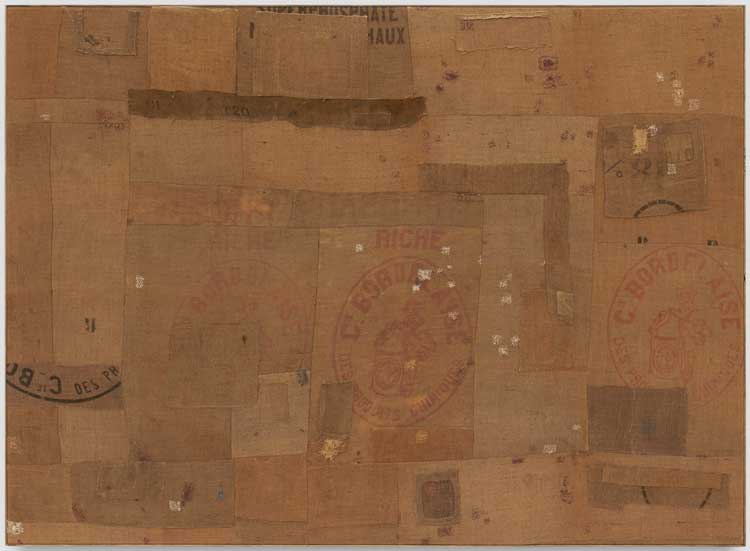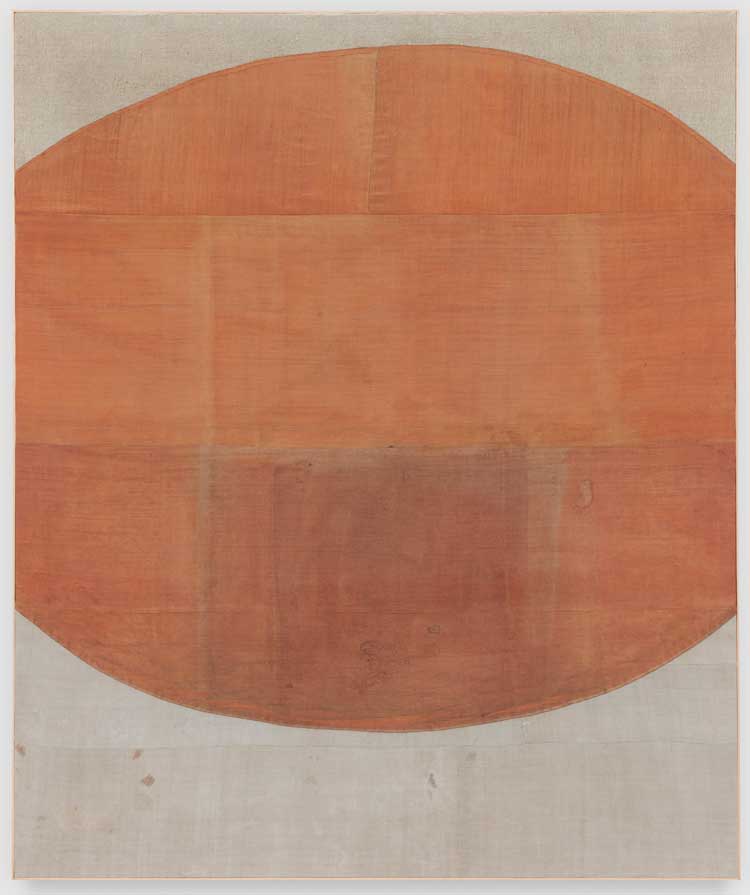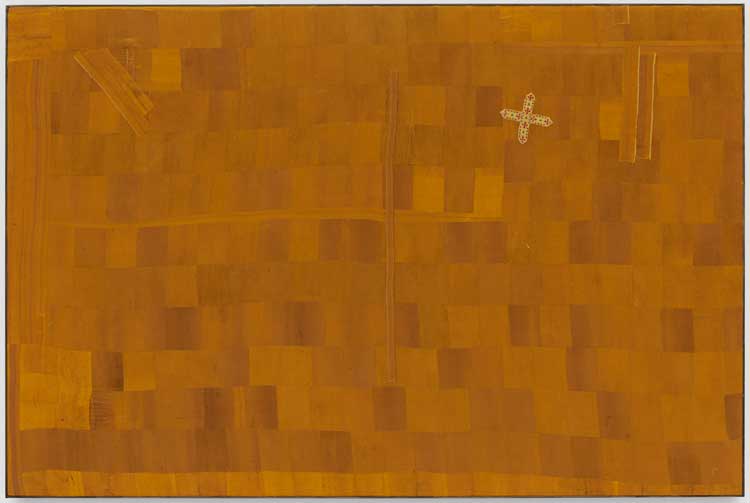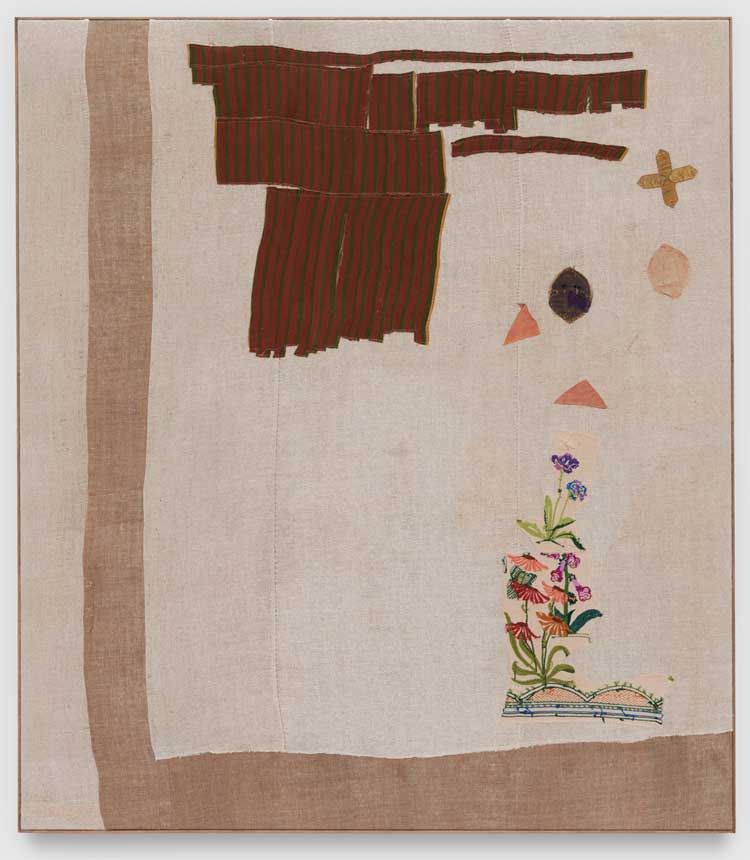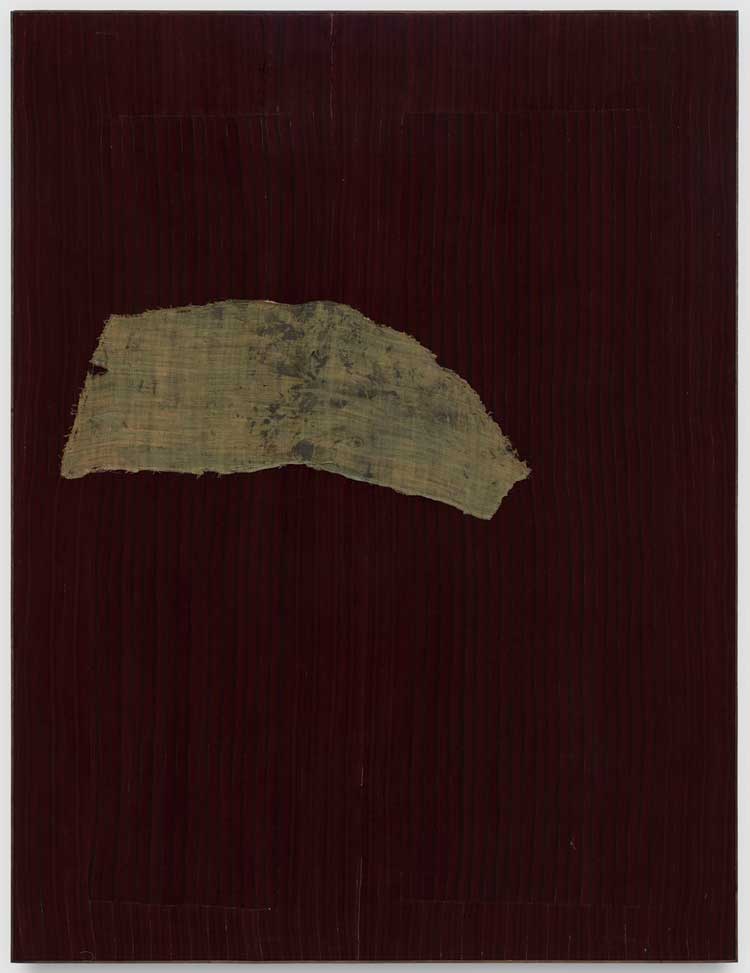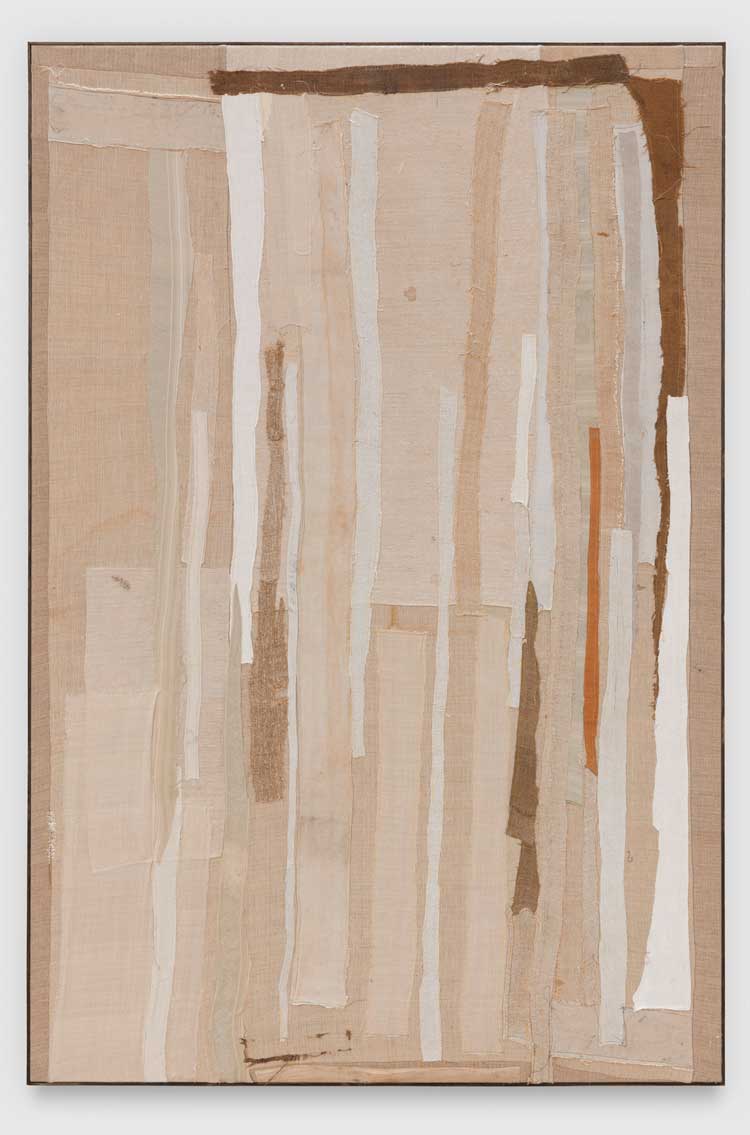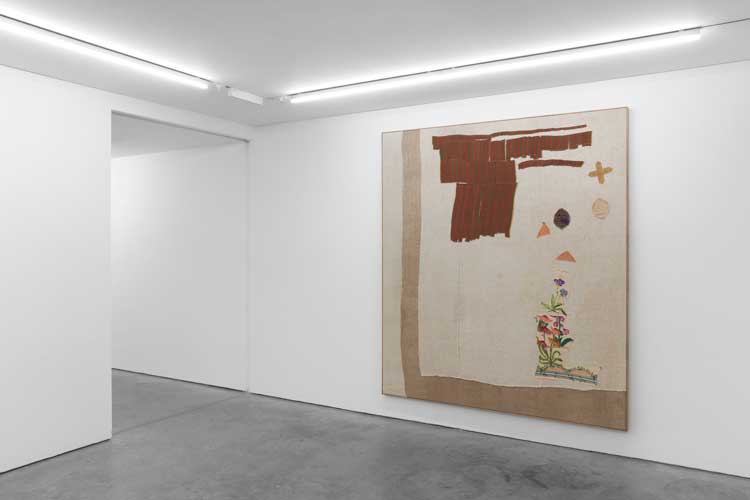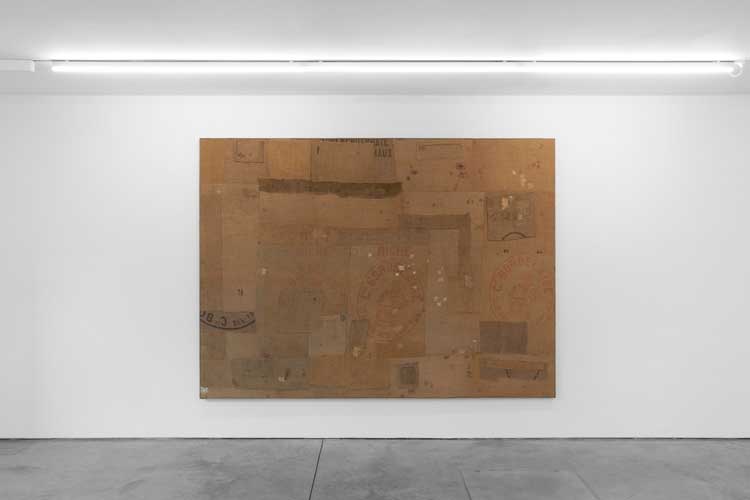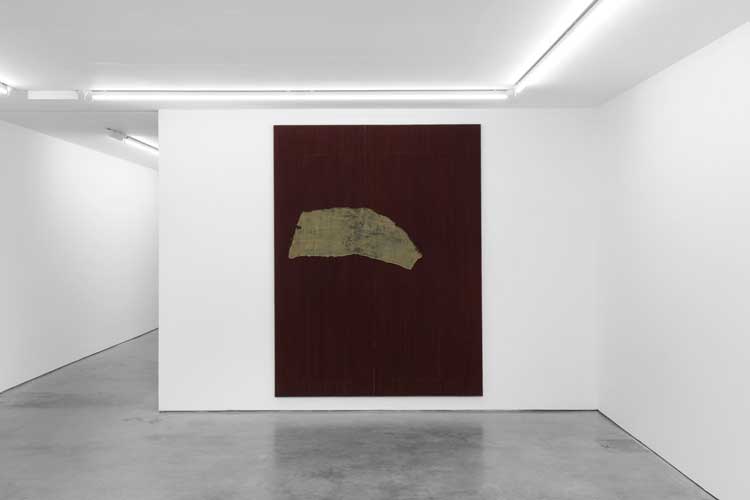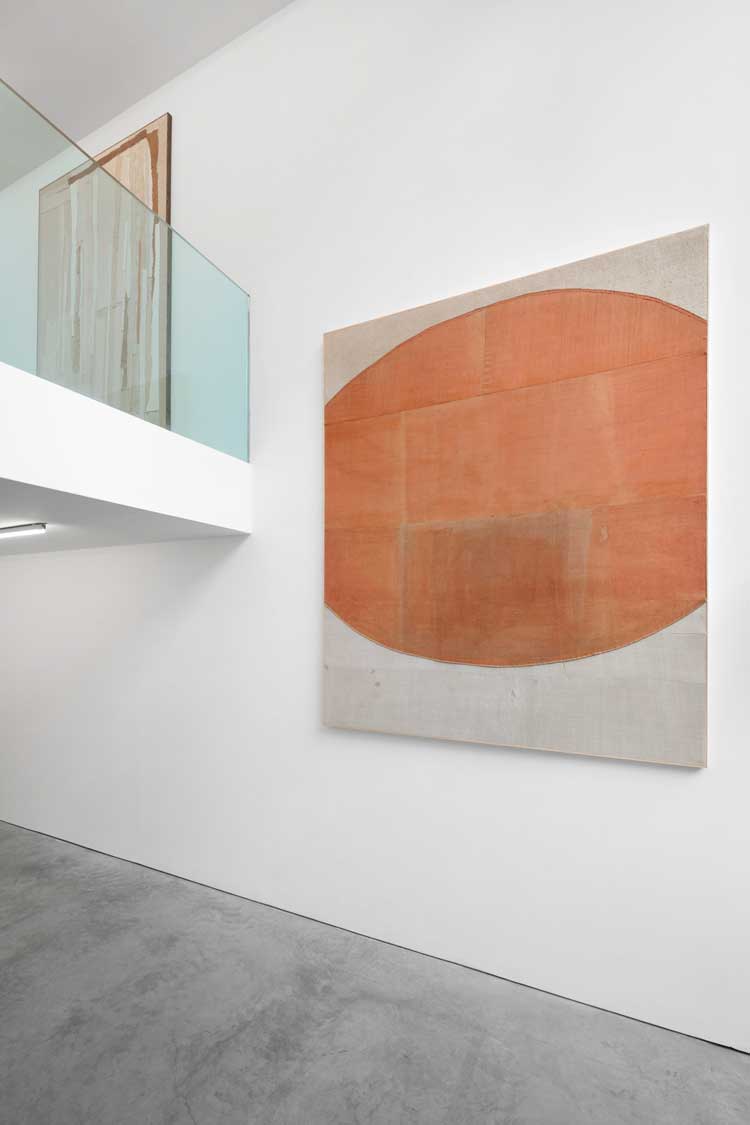

Cob Gallery, London
10 March – 9 April 2022
by CHRISTIANA SPENS
Fusing abstract art, textiles and assemblage, new large-scale works by Lawrence Calver, on show at Cob Gallery, create spaces of meditation and immersion in a subtle and considered manner.
With its earthy palette and the use of textiles such as linen, jute, suede and wool, there is immediately a grounding atmosphere to Under the Sun. I am reminded of looking down from a plane and seeing farmland below, where vast spaces become an assemblage of different shades and patches of earth. Seeing the world from this perspective – both high above, and right next to the earth – gives a feeling of wholeness and detachment at once.
[image3]
In Calver’s career to date, which has seen the young artist (b1992) exhibiting in the past two years at the Simchowitz Gallery in Los Angeles, the Ruci Art Space in Jakarta, Indonesia, and the De Brock Gallery in Belgium, he has developed a reputation for creating works that explore what it is to be free and to connect to the tactile, physical world around us, playing with abstraction, representation and collage, to interact with and represent the world in a compelling, intuitive way.
[image5]
With a background in fashion direction – he has a BA from the London College of Fashion – Calver employs the role of “director” or “parent” of his works, taking a caring, paternal approach to his materials, repurposing them in such a way that he guides them, in a sense, to their new manifestation as fine art. In this way, his work is akin to found art and, although he also sews, bleaches, stretches and stains the fabrics, there is an organic flow to the process and the final works that brings a sense of naturalness and authenticity, as if the artist and the materials have on some level connected, so that both retain their integrity in the work.
[image4]
Calver elevates these textiles to the realm of art and philosophical experience, and grounds himself (and us) in their earthiness. Simple things – canvas, cotton, a particular pigment – are given space and attention to be meditated on and appreciated in a way that is profoundly calming. Beauty, he implies, is something found and everyday, something at once discarded and cherished, dismissed and obsessed over. It is in the eye of the beholder, then, to decide which route to take, to decide whether or not something is beautiful. Here, Calver shows that by deciding to give attention and space to an otherwise mediocre or overlooked everyday material, there is beauty to be found and celebrated in “everything under the sun”, the expression from which the exhibition takes its title.
[image6]
Part of this beauty is also to be found in the careful, and yet intuitive juxtapositions of the various chosen fabrics, which the artist treats as a cast of characters in a performance, each with its own history, temperament and energy, which create changing effects depending on how they are brought together, and the particular compositions. Calver’s process, therefore, is a sort of choreography of forms, in which their liveliness is understood and used in an improvised, playful way.
[image2]
As well as all existing “under the sun”’, the materials used here also relate to the star itself through their positioning in the gallery. A large skylight in one of the gallery rooms drenches one wall in sunlight, and the large work Rising Sun takes advantage of this space to coexist with the environment and to embody the sun itself. All the works, meanwhile – such as Lotus, Vine, Young Horizon, Journeyman and Surface to Air – reveal in their materials and tones the ways in which materials, produced through agriculture and originally from plant matter, are formed from the sun as well; this simple life force is threaded into their very existence (as it is our own, too).
[image7]
This sense of the sun’s energy, and our reliance on it, is inherently one of interconnectivity, therefore; we all live because of the sun, and we all live under the sun. The production of textiles, through agriculture and then through the labour of printing, weaving, sewing and cutting, is a product of this interconnection, and so records a sort of natural-human process that records the sun’s everyday appearance and then disappearance. Fabric is a record of temporality, as well as a metaphor of our own, especially when so many of the fabrics used here are antique or “vintage” – as old, sometimes, as the artist and the visitors, and handled by many human beings, over time.
Under the Sun, as a whole, expresses an appreciation for the interconnectedness of human life and work with the natural world, through these means of production, and the ways in which we transform the world and it transforms us every single day. No canvas is merely blank or discarded or useless; each scrap of fabric has the potential to be transformed into something different. This exhibition encourages a philosophical reflection on what it truly means to be sustainable – how much a part of being human it is to process and transform the world around us, and how much a product of our world we are in being this way.
